Backyard Watermelon Growing: Your Guide to Juicy Success
Backyard watermelon growing might seem daunting, conjuring images of sprawling vines and elusive ripe fruit. But I’m here to tell you it’s far more achievable than you think! This article is your passport to a summer bursting with the sweet, refreshing taste of homegrown watermelons, right in your own backyard. I’ll share my tried-and-true Backyard Watermelon Growing tricks and DIY solutions that have transformed my own gardening experience, turning it from a frustrating endeavor into a bountiful harvest.
Growing watermelons has a rich history, deeply intertwined with various cultures across the globe. From ancient Egypt, where evidence suggests watermelons were cultivated thousands of years ago, to their modern-day popularity, these juicy fruits have always held a special place in our hearts (and on our plates!). But let’s be honest, buying watermelons from the store often leaves you wanting more – the flavor isn’t always as vibrant, and you miss out on the sheer satisfaction of nurturing a plant from seed to succulent fruit.
Why Grow Your Own?
That’s where my Backyard Watermelon Growing guide comes in. This isn’t just about growing watermelons; it’s about connecting with nature, enjoying the process of cultivation, and savoring the unparalleled taste of a sun-ripened melon you’ve grown yourself. You’ll learn how to select the perfect seeds, prepare the ideal soil conditions, and implement simple DIY techniques to maximize your yield. Plus, you’ll discover clever tricks to deter pests and diseases, ensuring a healthy and abundant harvest. Imagine the pride of presenting your friends and family with watermelons you’ve grown from your own backyard – it’s an experience unlike any other!
So, let’s dive in and unlock the secrets to successful Backyard Watermelon Growing. Get ready to transform your backyard into a sweet, juicy oasis!
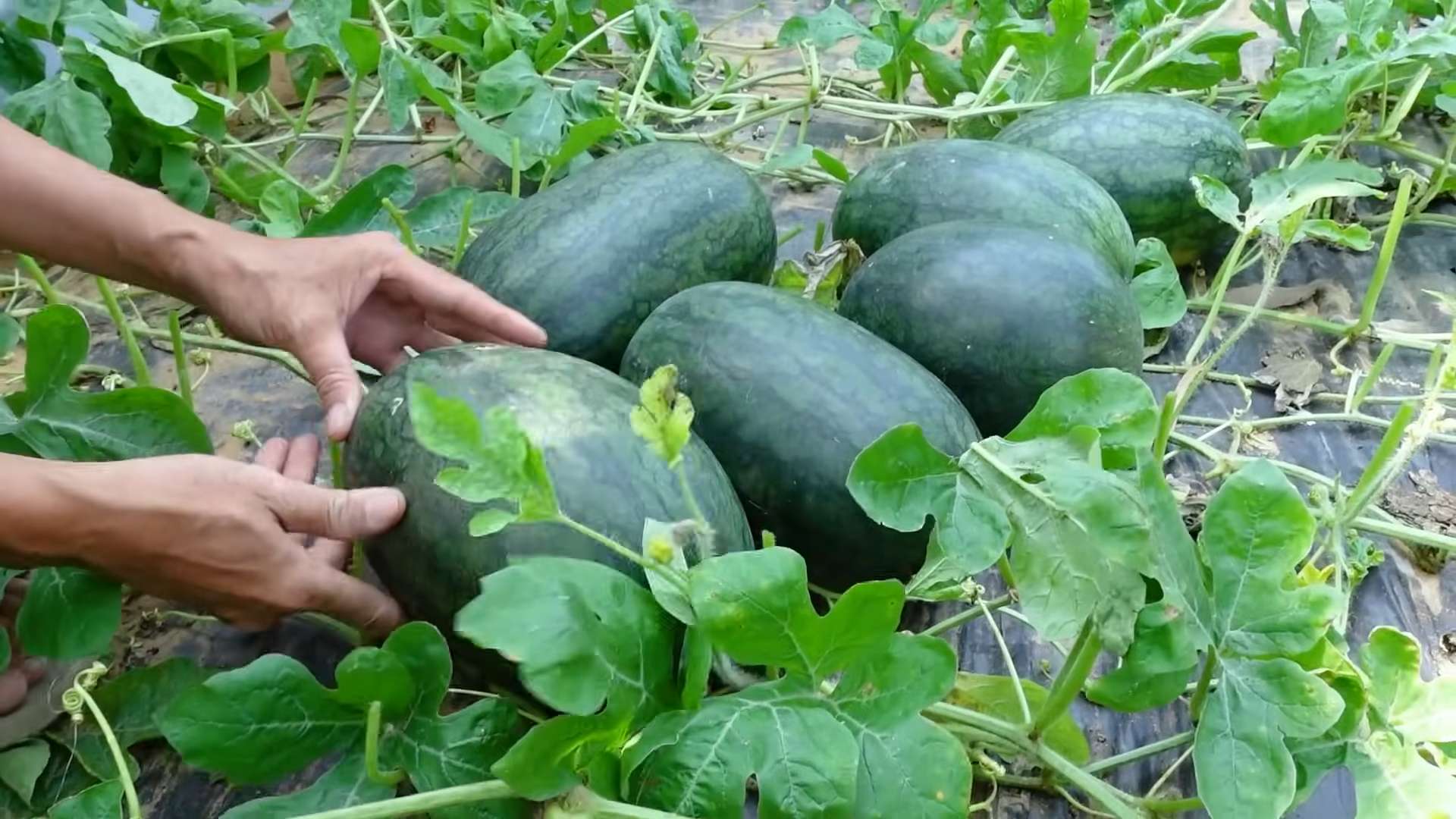
Growing Your Own Backyard Watermelons: A Complete Guide
I love the juicy sweetness of a perfectly ripe watermelon, and nothing beats the satisfaction of growing your own. It might seem daunting, but with a little planning and effort, you can enjoy homegrown watermelons all summer long. Here’s my step-by-step guide to help you succeed!
Phase 1: Planning and Preparation
- Choose the right variety: Consider your climate and growing season. Smaller varieties like Sugar Baby are great for smaller gardens, while larger varieties need more space. Check seed packets for days to maturity to ensure they’ll ripen before your first frost.
- Select a sunny spot: Watermelons need at least six to eight hours of direct sunlight daily. Find a location in your backyard that receives ample sun throughout the day.
- Prepare the soil: Watermelons thrive in well-drained, fertile soil. Amend heavy clay soil with compost or other organic matter to improve drainage and aeration. Conduct a soil test to determine nutrient levels and adjust accordingly. A slightly acidic pH (6.0-6.8) is ideal.
- Gather your supplies: You’ll need watermelon seeds, gardening gloves, a shovel or trowel, a watering can or hose, fertilizer (balanced or specifically formulated for melons), and possibly some row covers or netting to protect against pests and birds.
Phase 2: Planting the Seeds
- Start seeds indoors (optional): For an earlier harvest, start seeds indoors 3-4 weeks before the last expected frost. Use small peat pots or seed starting trays to avoid disturbing the roots when transplanting. Keep the soil consistently moist but not soggy.
- Direct sowing: Alternatively, you can direct sow seeds outdoors after the last frost. Plant seeds 1 inch deep and 2-3 feet apart in hills or rows. Plant several seeds per hill to increase your chances of successful germination, thinning to the strongest plant later.
- Water thoroughly: After planting, water the seeds gently but thoroughly to help them germinate. Keep the soil moist until germination, which typically takes 7-10 days.
- Thinning: Once seedlings emerge, thin them to one or two strong plants per hill, leaving the strongest plants. This gives the remaining plants ample space to grow.
Phase 3: Caring for Your Watermelon Plants
- Watering: Water deeply and regularly, especially during dry periods. Water at the base of the plant to avoid wetting the leaves, which can increase the risk of fungal diseases. Aim for consistent moisture, avoiding both overwatering and underwatering.
- Fertilizing: Apply a balanced fertilizer according to package directions, or use a fertilizer specifically formulated for melons. Side-dress the plants (apply fertilizer along the sides of the plants) about a month after planting and again a month later. Avoid over-fertilizing, as this can lead to excessive foliage growth at the expense of fruit production.
- Weed control: Regularly remove weeds around your watermelon plants to prevent competition for water and nutrients. Mulching around the plants can help suppress weeds and retain soil moisture.
- Pest and disease control: Monitor your plants regularly for signs of pests or diseases. Common pests include aphids, squash bugs, and cucumber beetles. Use appropriate pest control methods, such as insecticidal soap or neem oil, if necessary. Good air circulation can help prevent fungal diseases.
- Pollination: Watermelons are typically pollinated by bees. If you have few bees in your area, you may need to hand-pollinate the flowers. This involves gently transferring pollen from the male flower (smaller flower with no developing fruit) to the female flower (larger flower with a small developing fruit at the base).
- Supporting the fruit: As the watermelons grow, they can become quite heavy. Place a piece of wood or other support under the fruit to prevent it from rotting on the ground. This is especially important for larger varieties.
Phase 4: Harvesting Your Watermelons
- Check for ripeness: Watermelons are ripe when they have a deep color (usually dark green), a dull sound when thumped, and a slightly yellowed spot where they rested on the ground. The tendrils near the stem will also dry up.
- Harvest carefully: Use a sharp knife or pruning shears to cut the watermelon from the vine. Leave a couple of inches of stem attached to the fruit.
- Cure the watermelon: Allow the harvested watermelon to cure for a few days in a cool, dry place. This improves its flavor and shelf life.
Phase 5: Troubleshooting
- Yellowing leaves: This can indicate nutrient deficiencies, overwatering, or underwatering. Check your watering schedule and consider a soil test to determine nutrient levels.
- Wilting plants: This could be due to underwatering, pest infestation, or disease. Check the soil moisture, inspect for pests, and look for signs of disease.
- Small or misshapen fruit: This can be caused by poor pollination, nutrient deficiencies, or insufficient water. Ensure adequate pollination, fertilize appropriately, and maintain consistent watering.
- Bitter tasting watermelons: This often results from inconsistent watering or stress during the growing season. Aim for consistent moisture throughout the growing period.
Remember, patience is key! Growing watermelons takes time and effort, but the reward of biting into a juicy, homegrown watermelon is well worth it. Happy growing!
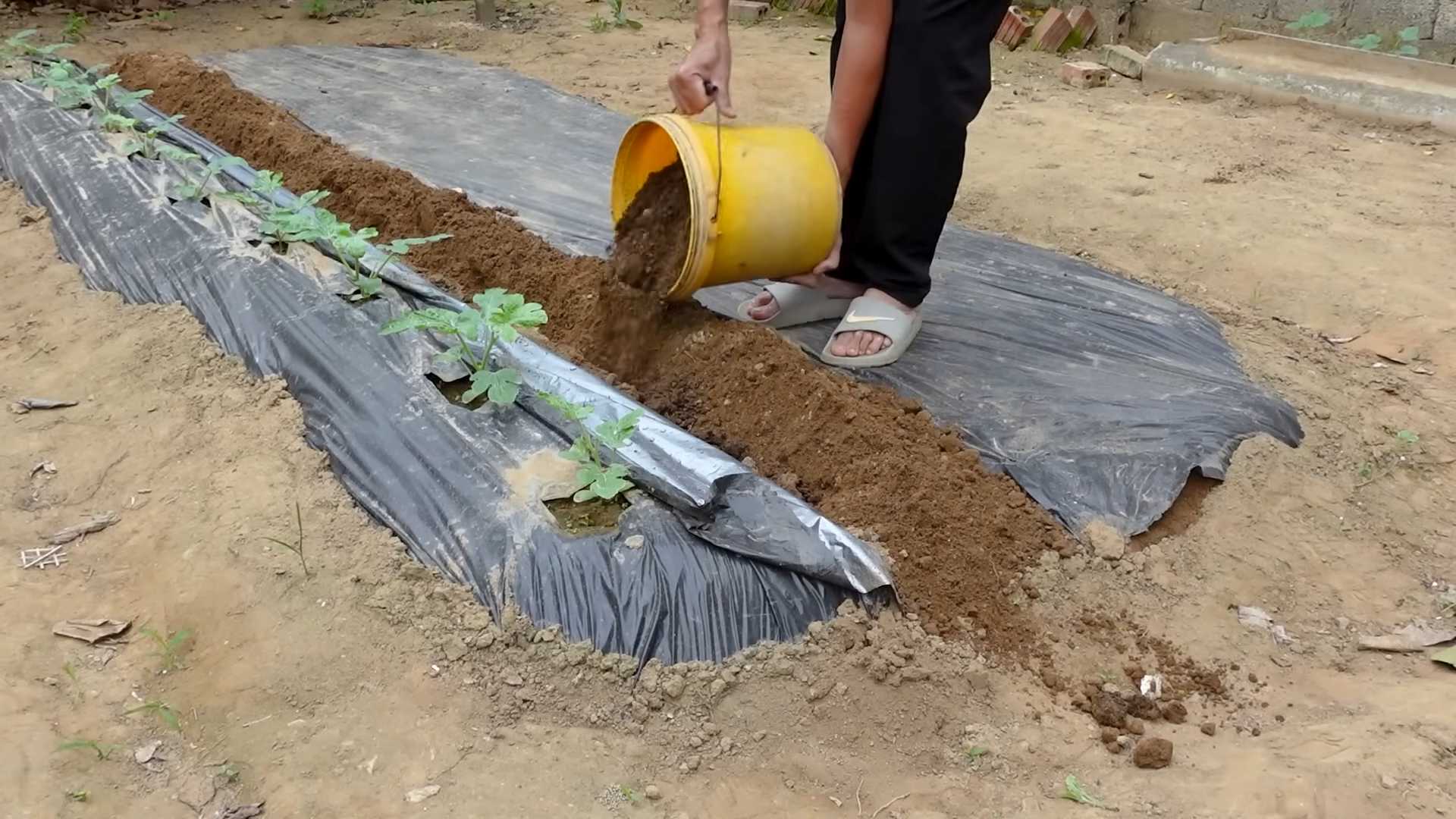
Conclusion
So there you have it – your guide to successfully growing juicy, delicious watermelons right in your own backyard! This DIY approach to watermelon cultivation offers a rewarding experience unlike any other. You get to witness the entire life cycle of this amazing fruit, from tiny seed to ripe, sweet melon, all while enjoying the satisfaction of growing your own food. The unparalleled taste of a homegrown watermelon, bursting with flavor and sweetness, is a reward in itself, far surpassing anything you can find in the store. This backyard watermelon growing method is a must-try for anyone with even a small patch of land and a desire to connect with nature. It’s a fantastic project for families, a rewarding hobby for individuals, and a delicious way to enhance your summer. The effort invested is minimal compared to the immense satisfaction of harvesting your own crop. Beyond the simple joy of growing your own food, you’ll also be contributing to a more sustainable lifestyle, reducing your carbon footprint, and enjoying the freshest, most flavorful watermelon imaginable.
Beyond the basic method outlined, there are countless ways to personalize your watermelon growing experience. Experiment with different watermelon varieties – from the classic crimson-fleshed beauties to the unique yellow or orange varieties. Consider using trellises to support the vines, maximizing space and preventing rot. Try companion planting, incorporating herbs like basil or borage to attract beneficial insects and deter pests. You can even explore different soil amendments to optimize your watermelon’s growth and flavor. The possibilities are endless! Don’t be afraid to get creative and adapt the techniques to suit your specific environment and preferences. The beauty of this DIY project lies in its adaptability and the opportunity for personal expression.
We strongly encourage you to embark on this rewarding journey of backyard watermelon growing. Share your experiences with us! Post pictures of your thriving vines and magnificent melons on social media using #BackyardWatermelonGrowing. We’d love to see your success stories and learn from your experiences. Let’s build a community of backyard watermelon enthusiasts, sharing tips, tricks, and the joy of harvesting nature’s sweet bounty. Remember, even if you’ve never gardened before, this project is surprisingly accessible and rewarding. With a little patience and care, you’ll be enjoying the fruits (or should we say, melons!) of your labor in no time. So grab some seeds, prepare your soil, and get ready for a summer filled with the sweet taste of success!
Frequently Asked Questions
What type of soil is best for growing watermelons?
Watermelons thrive in well-drained, sandy loam soil with a slightly acidic pH (around 6.0-6.8). Amend heavy clay soils with compost or other organic matter to improve drainage. Poor drainage can lead to root rot, a common problem for watermelons. Before planting, ensure your soil is loose and fertile, allowing for easy root penetration. Testing your soil’s pH is highly recommended to ensure optimal conditions for growth.
How much sunlight do watermelons need?
Watermelons are sun-worshippers! They need at least six to eight hours of direct sunlight per day to produce abundant, sweet fruit. Choose a location in your backyard that receives ample sunlight throughout the day. Insufficient sunlight can result in poor fruit development and reduced sweetness. Consider the sun’s path throughout the day when selecting your planting site.
When is the best time to plant watermelon seeds?
The best time to plant watermelon seeds depends on your climate. Generally, you should wait until all danger of frost has passed and the soil temperature has warmed to at least 70°F (21°C). In warmer climates, you can plant directly outdoors, while in cooler regions, starting seeds indoors several weeks before the last frost is often recommended. Check your local frost dates for the most accurate planting timeline.
How often should I water my watermelons?
Consistent watering is crucial for healthy watermelon growth, but avoid overwatering, which can lead to root rot. Water deeply and regularly, especially during dry periods. Aim for about 1-2 inches of water per week, adjusting based on rainfall and weather conditions. Mulching around the plants can help retain soil moisture and reduce the frequency of watering. Feel the soil before watering; if it’s dry a few inches below the surface, it’s time to water.
What are some common watermelon pests and diseases?
Watermelons can be susceptible to various pests and diseases, including aphids, squash bugs, powdery mildew, and anthracnose. Regularly inspect your plants for signs of infestation or disease. Implementing preventative measures, such as crop rotation and using resistant varieties, can help minimize problems. If pests or diseases occur, consider using organic pest control methods or consulting with a local gardening expert for advice. Early detection and prompt action are key to managing these issues effectively.
How do I know when my watermelons are ripe?
Determining watermelon ripeness is a crucial step in harvesting. Look for a dull, creamy yellow spot on the underside of the fruit – this indicates the melon has been resting on the ground and is ready for picking. The rind should be firm and have a deep color, characteristic of the specific variety. A ripe watermelon will also have a deep, resonant sound when thumped gently. Don’t be afraid to gently lift a melon; a ripe one will feel heavy for its size. These combined indicators will help you harvest your watermelons at their peak flavor.

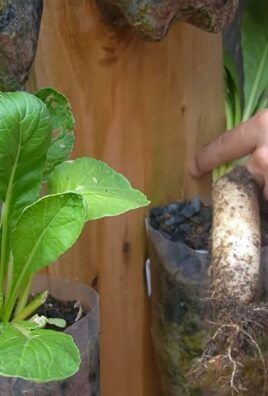
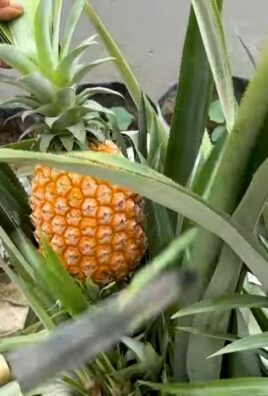
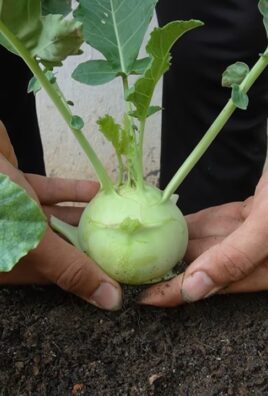
Leave a Comment